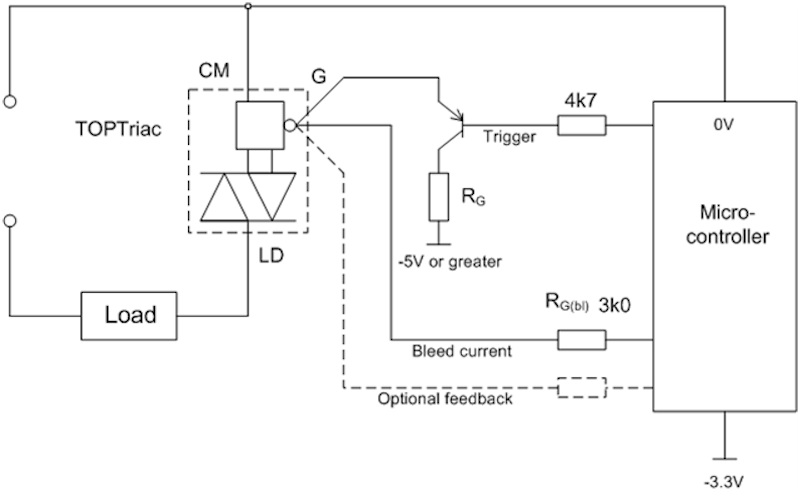Author:
Cristian Ionescu and Ceyda Akbay, NXP Semiconductors
Date
05/14/2013
When it comes to home appliances, the overwhelming focus tends to be on advanced features and functionality. Nevertheless, design choices that enhance user safety and overcome possible malfunctions should play an even more important role. In the UK alone, in 2010/11, 6,000 appliances were officially reported as "catching fire" with many non-official reports of "smoking" appliances. In US, according to Consumer Reports, more than 15 million appliances have been recalled during the last 6 years for defects that could cause a fire. Even if there is no person danger or harm caused, the cost of failure and brand damage are significant. Implementing safety measures starts already from concept design. Engineers make detailed evaluations of possible thermal conditions and electric situations which could generate short circuits or overheating, eventually leading to component damage or even, in extreme cases, fires or explosions. In these cases, external protection is required to overcome dangerous situations. Integration of protection in the triac Over-temperature events can cause loss of switching control and over-current conditions for sustained periods of time in the load. This can not only result in the over-heating of the power switching control component (generally a triac), but also potentially the load. Some examples here are the motors in washing machines, dishwashers or vacuum cleaners, but also compressors in fridges. Over-temperature events of this type can damage the triac itself, damage the appliance, and affect the number of appliance failures occurring in the field. In order to address these challenges, NXP has introduced a temperature and over-load protected triac (TOPTriacâ„¢) created specifically to protect itself and the appliance loads from damage during over-temperature and over-load events. TOPTriac is a two quadrant, high commutation, AC power switch which includes several unique characteristics beyond standard triac features, including: o Over-temperature self protection o Over-load self protection o Exclusive negative gate triggering o Smart functions like control capability and over-load status monitoring

The TOPTriac works like a standard triac when the chip temperature is lower than the normal operating Tj(max) (e.g. <125°C). When the temperature rises above the maximum normal operating temperature, Tj(max), the gate conditioning circuitry functions and the TOPTriac will turn-off automatically at a temperature Ttrip , protecting the device and load. When the chip temperature cools below Tj(max)(125°C), the gate trigger current can be reset and the triac will function normally again. The TOPTriac is only triggered with negative gate current and can be controlled with a modified discrete phase control circuit or with a microcontroller. The Gate of the TOPTriac acts as the triggering input, but for control purposes, it can also act as a feedback output since it provides voltage signatures that indicate the status of the triac. These voltage signatures enable a microcontroller to monitor this feedback from the Gate and act upon it, according to the needs of the application. In addition to the safety advantages it brings to the application, the TOPTriac helps reducing the overall system cost. In the case of a standard AC switch without integrated protection, the design might need to ove- specify the heatsink to make sure the application can deal with faults and over-loads situations. In the case of TOPTriac, heatsinks can be reduced in size and specified for normal operation only, since the smart triac's self-protection takes care of over-load conditions. In general, with the appropriate triggering and reset signals, TOPTriac could be useful for any application that may experience over-loading, over-current or over-temperature events. Safer integration of the control unit Another area that requires close attention when it comes to safety measures is the control unit for appliance operation. For example, in major home appliances, the IEC60370 safety norms will define a set of hardware and software guidelines the MCU should comply with. According to these norms, the MCU should be able to run various internal checks (memory or registers) and assure proper reaction even in the case of internal malfunctions, such as unexpected loss of internal clock. In order to enable these requirements, NXP has embedded a set of safety-relevant features into a very cost-effective MCU implementation around the ARM® Cortex™-M0 processor. The NXP LPC1100 MCU family is very suitable for control operation in the home appliance industry, in both major and small appliances. The LPC1100 family features from 4 KB up to 64KB flash, a very flexible clocking system including 1% internal RC oscillator, up to 8-channel ADC, and high current output drive capability. The family also offers a range of standard communication peripherals such as UART or I2C for connection to the other system boards. The packages start from 20 pins up to 48 pins. For Safety compliance, the integrated windowed WD with independent WD oscillator helps the application identify any clock malfunction and assures proper reaction. The flash CRP (Code Read Protection) allows the user to define different application security levels and avoid unwanted access to the flash memory, for example. In addition, the parts are certified for Class B software compliance. As the appliance environment is also a significant source for electro-magnetic disturbances generated by motors, valves or power line, designing components like MCUs requires a good understanding of how the MCU pins behave under these conditions. In order to provide accurate insight into pin behavior, NXP provides the EFT Immunity Tests results according to IEC 61967 requirements. The test report evaluates the immunity levels for signal and power pins and helps with proper, safer integration of the MCU into the system. As part of its commitment to the appliance industry, NXP continues to research and work together with its partners to find and implement new features aimed at increasing the functionality and safety levels of appliance designs. NXP